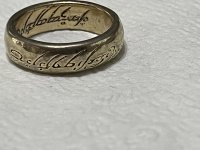daytondigger
Bronze Member
I've owned my Fisher for a number of years now and have enjoyed it immensely. In the past I used Whites, tesoros and many others and have had varying degrees of success with them. One day I was using a then top of the line Tesoro, which I dearly loved, and my hunting partner was using a CZ-5. While he was in the house getting ready to leave, I picked up his CZ-5 and air tested a quarter, I then compared it to my Tesoro and was shocked at the difference. The Fisher was obviously a far deeper detector than mine. That was over five years ago and for someone who used to upgrade every year, I have kept the same machine and have no plans to switch. I would like to add the new pinpointer I've heard about, other than that, you'd have a tough time selling me on a new detector.



 )
) another test you can try is to air test a quarter on your machine. pass it under the coil just until the beep is recognizable as a good diggable target. now turn the quarter on edge, and see if the machine will still pick it up. the quarters mass has not changed, but the surface area of the quarter visable to your detector has. when held on edge the machine will not register the quarter as a hit like it did when it was held flat.
another test you can try is to air test a quarter on your machine. pass it under the coil just until the beep is recognizable as a good diggable target. now turn the quarter on edge, and see if the machine will still pick it up. the quarters mass has not changed, but the surface area of the quarter visable to your detector has. when held on edge the machine will not register the quarter as a hit like it did when it was held flat.

